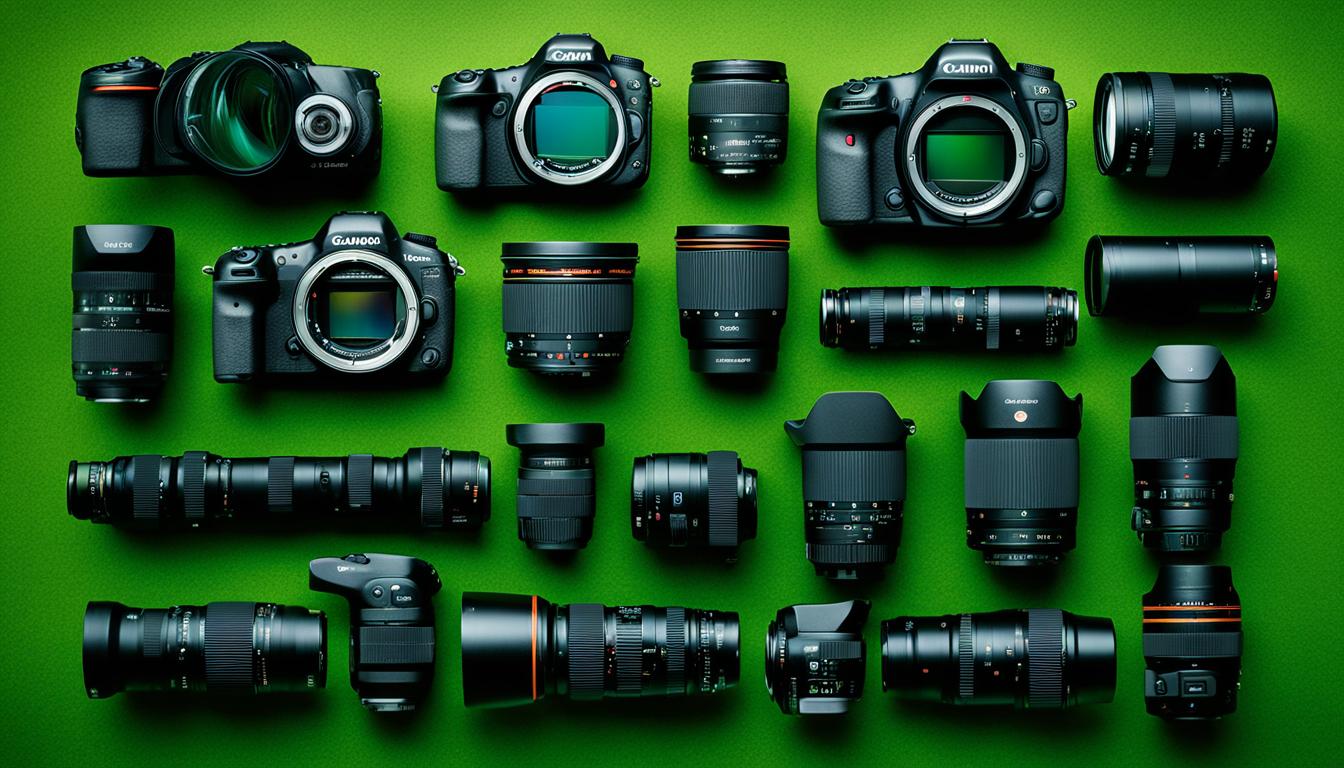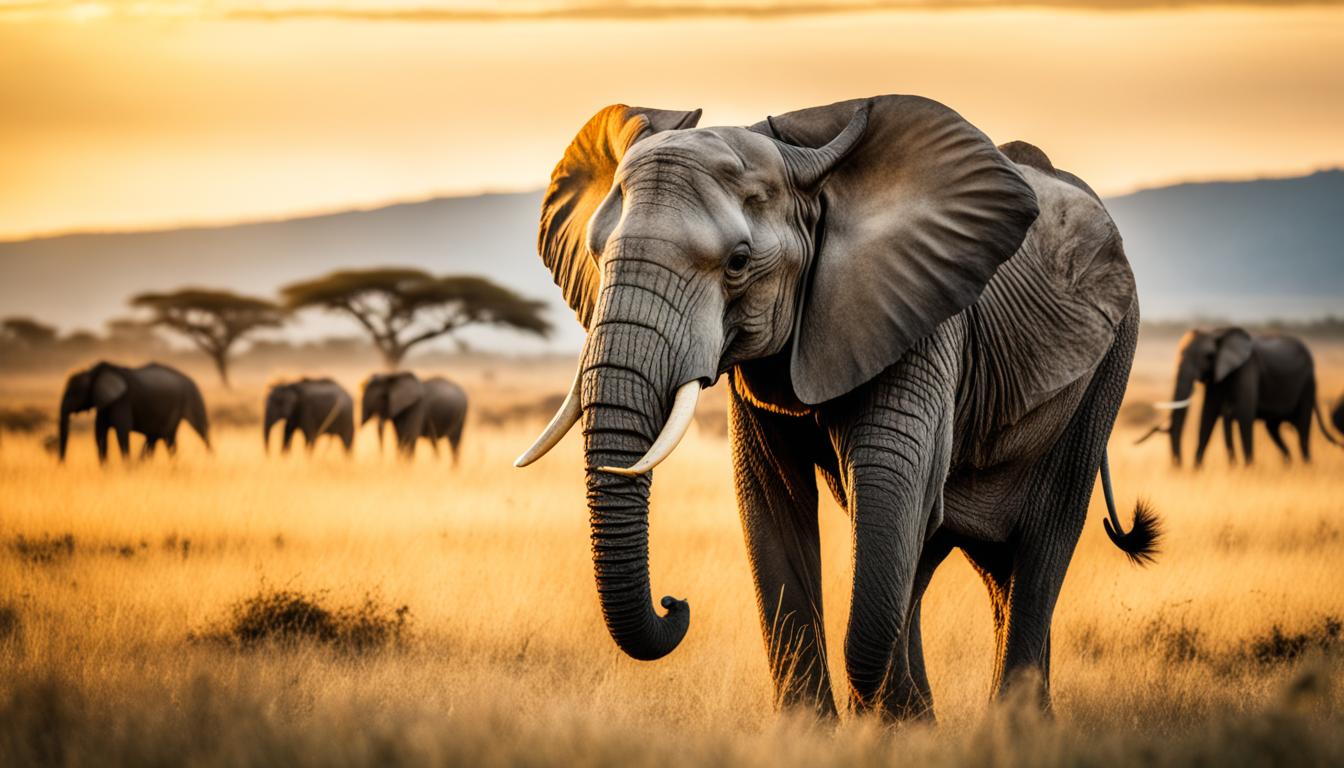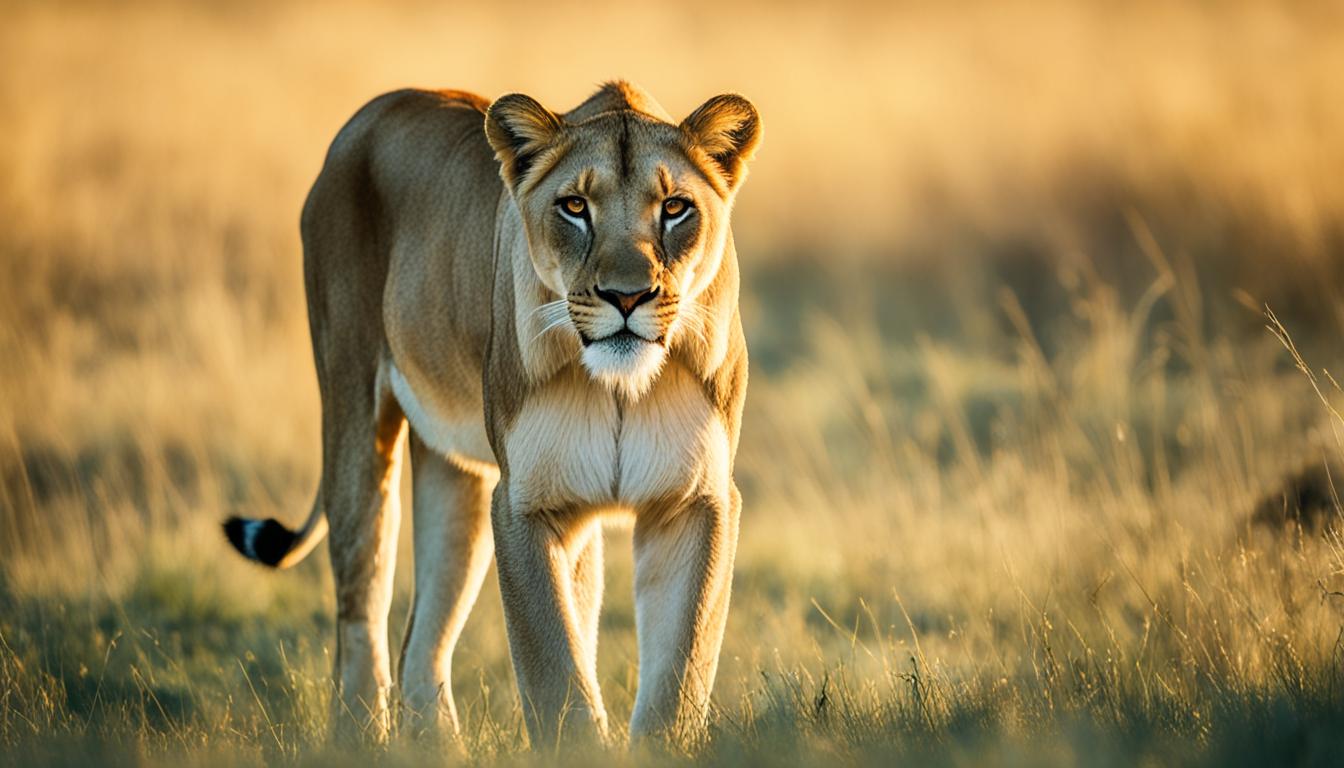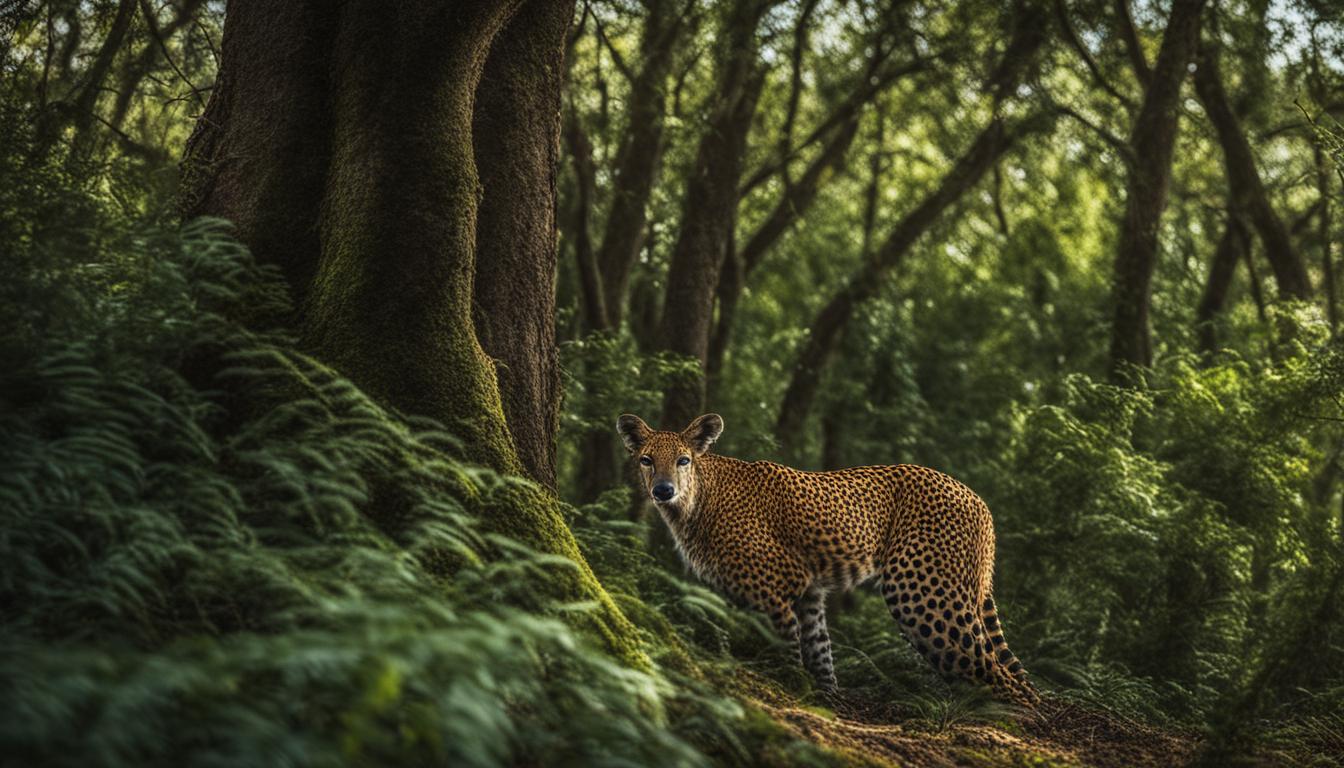Welcome to the world of wildlife photography! Whether you’re a beginner or a seasoned professional, having the right gear is essential for capturing stunning images of nature’s beauty. At [Company Name], we are passionate about wildlife photography and understand the importance of choosing the best equipment for the job. In this guide, we’ll explore top camera equipment for nature photography and provide valuable recommendations for the best cameras and lenses for wildlife photography. Get ready to take your wildlife photography to the next level!
Key Takeaways:
- Investing in the right cameras and lenses is crucial for capturing stunning wildlife photography.
- Consider factors such as camera features, lens focal length, and image stabilization when choosing your gear.
- Read wildlife lens reviews and explore a variety of options before making your final decision.
- Selecting the best wildlife camera and lens combo is essential for achieving your desired results.
- Take your time to research and choose the gear that aligns with your budget and photography goals.
How We Picked the Best Cameras for Wildlife Photography
At Conservation Visual Storytellers Academy, we have extensive experience in nature and wildlife photography. To select the best cameras for wildlife photography, we consider personal experience, insights from fellow professionals, industry experts, editorial and user reviews, and details from manufacturers. We take into account factors such as weight, ISO capabilities, autofocus points, frames per second, buffering, image stabilization, and other features that enhance the wildlife photography experience. Our goal is to provide a range of options to suit different goals and budgets, including a mix of entry-level and professional camera bodies from various manufacturers.
Best Cameras for Wildlife Photography: Our Reviews & Recommendations
Welcome to our in-depth reviews and recommendations for the best cameras for wildlife photography. When capturing stunning images of wildlife, having the right camera is essential to ensure that you don’t miss any precious moment. After extensive research and testing, we have curated a list of top-notch cameras that excel in various aspects of wildlife photography.
Sony Alpha 1
The Sony Alpha 1 is a powerhouse that combines high-resolution imaging, impressive autofocus, and exceptional speed. With its 50.1-megapixel full-frame sensor, 30fps continuous shooting, and advanced animal eye autofocus, this camera enables you to capture wildlife with unparalleled precision and detail. Its fast burst rate and real-time tracking make it an ideal choice for photographing fast-moving subjects.
Canon EOS R3
The Canon EOS R3 is designed to deliver exceptional performance in wildlife photography. Its 24.1-megapixel full-frame sensor, advanced autofocus system, and high-speed shooting capabilities make it a reliable tool for capturing wildlife in action. The camera also offers impressive low-light performance and is equipped with a durable, weather-sealed body, perfect for challenging outdoor conditions.
Nikon Z 9
With its 45.7-megapixel sensor and advanced autofocus system, the Nikon Z 9 is a top contender for wildlife photography. It boasts excellent image quality and low-light performance, ensuring that you capture every detail of the natural world. The camera’s rugged build and enhanced sealing make it a reliable companion for wildlife photographers venturing into extreme environments.
Nikon D850
The Nikon D850 is a versatile DSLR camera that excels in wildlife photography. Its 45.7-megapixel sensor and advanced autofocus system allow for exceptional image quality and accurate subject tracking. The camera’s impressive ISO range and dynamic range ensure that you capture stunning images even in challenging lighting conditions.
Canon EOS R5
The Canon EOS R5 is known for its high-resolution 45-megapixel sensor and advanced autofocus system, making it an excellent choice for wildlife photography. Its 20fps continuous shooting speed, combined with the ability to record 8K video, provides versatility for capturing both stills and action-packed scenes. The camera’s in-body image stabilization further enhances the quality of your shots.
These are just a few of the cameras that impressed us with their performance in wildlife photography. Each camera on our list offers unique features and capabilities, ensuring that there’s an option to suit every photographer’s needs and preferences. Whether you’re a professional seeking the utmost precision or an enthusiast looking to capture the beauty of nature, these cameras won’t disappoint.
What to Look for When Shopping for the Best Camera for Wildlife Photography
When shopping for the best camera for wildlife photography, there are several important factors to consider. We understand that capturing the incredible beauty of nature requires the right equipment. In this section, we will walk you through the key features and considerations to keep in mind when choosing a camera that suits your wildlife photography needs.
Megapixels for Wildlife Photography:
Megapixels play a crucial role in determining the level of detail in your wildlife photographs. A higher megapixel count can result in sharper and more detailed images, especially when you need to zoom in or crop an image. While higher megapixels are generally desirable, keep in mind that they also lead to larger file sizes, which may require more storage space on your memory cards and computer. Consider your specific preferences and needs as you decide on the appropriate megapixel range for your wildlife photography.
Mirrorless vs. DSLR for Wildlife Photography:
When choosing a camera for wildlife photography, you’ll need to decide between a mirrorless camera or a DSLR (digital single-lens reflex) camera. Mirrorless cameras are known for their compact size and lighter weight, making them more portable for outdoor adventures. They also offer advanced autofocus systems and electronic viewfinders that show you a preview of the final image. On the other hand, DSLR cameras provide excellent battery life, a wide range of lens options, and optical viewfinders that offer a natural and unfiltered view of the scene. Consider your shooting style, preferences, and the specific advantages of each camera type to select the best option for your wildlife photography needs.
Camera Features for Wildlife Photography:
When it comes to wildlife photography, certain camera features can greatly enhance your shooting experience. These features include:
- Autofocus Capabilities: Look for a camera with advanced autofocus systems that can quickly and accurately track wildlife subjects, even in challenging lighting conditions or fast-paced scenes.
- Frames per Second (FPS): A higher frames per second rate allows you to capture fast-moving wildlife with greater precision, increasing your chances of capturing the perfect moment.
- Buffering: Cameras with larger buffers can handle continuous shooting for longer periods, ideal for capturing decisive wildlife moments or sequences of action.
- Image Stabilization: Image stabilization technology helps reduce camera shake, resulting in sharper images, especially when shooting handheld or with longer lenses.
Lens Compatibility:
Ensure that the camera you choose is compatible with a wide range of lenses suitable for wildlife photography. Different lens options allow you to capture diverse wildlife subjects, from birds in flight to distant mammals. Research the availability and compatibility of lenses for your chosen camera system to expand your photographic capabilities and creativity.
Image Stabilization for Wildlife Photography:
Wildlife photography often requires handheld shooting in unpredictable outdoor environments, where camera shake can be a challenge. Look for a camera with built-in image stabilization, either in the camera body or in select lenses, to help mitigate the effects of camera shake and improve the sharpness of your wildlife images. This feature can make a significant difference, particularly when using telephoto lenses or shooting in low light conditions.
By considering these factors and weighing your specific requirements, you’ll be better equipped to find the best camera that suits your wildlife photography needs. The right camera will empower you to capture stunning wildlife images and tell compelling visual stories.
How We Picked the Best Lenses for Wildlife Photography
Choosing the right lens for wildlife photography is a crucial decision that can greatly impact the quality and versatility of your images. At Conservation Visual Storytellers Academy, we understand the unique challenges and requirements of capturing stunning wildlife photos. Our selection of the best lenses for wildlife photography is based on extensive research, expertise, and real-world testing.
We consider a variety of factors when evaluating lenses, including:
- Lens Focal Length: The focal length of a lens determines its zoom range and ability to capture distant subjects. For wildlife photography, longer focal lengths are typically preferred to achieve greater reach and magnification.
- Aperture: A wider aperture allows for more light to enter the lens, resulting in brighter and sharper images, particularly in low-light conditions. A lens with a wide aperture is advantageous for wildlife photography.
- Image Stabilization: Wildlife photography often involves capturing subjects in motion and handheld shooting. Image stabilization technology helps reduce camera shake and improves the sharpness of images.
- Image Quality: We carefully assess the overall image quality, including sharpness, clarity, color accuracy, and distortion control. A lens that delivers exceptional image quality is essential for wildlife photography.
In addition to these technical considerations, we also take into account the specific needs of wildlife photographers. Different wildlife subjects require different lenses to capture them effectively. For example, bird photography may require a lens with a longer focal length to capture small and distant subjects, while wide-angle lenses may be more suitable for capturing landscapes and environmental shots.
Whether you prefer zoom lenses or prime lenses, our selection covers a range of options to suit your preferences and requirements. Zoom lenses offer versatility, allowing you to adjust the focal length to suit different wildlife photography situations. Prime lenses, on the other hand, often provide superior image quality, wider apertures, and are popular choices for their sharpness and ability to create a beautiful bokeh effect.
Our rigorous selection process ensures that the lenses we recommend are reliable, durable, and well-suited for capturing stunning wildlife photographs. By choosing the right lens, you can enhance your photography skills and capture breathtaking images of the natural world.

| Lens | Key Features | Best for |
|---|---|---|
| Canon EF 100-400mm f/4.5-5.6L IS II USM | Zoom range, image stabilization | Bird photography, versatile wildlife subjects |
| Canon EF 600mm f/4L IS III USM | Super telephoto, wide aperture | Bird photography, distant wildlife subjects |
| Canon EF 200-400mm f/4L IS USM Extender 1.4x | Zoom range, built-in teleconverter | Bird and wildlife photography |
| Nikon AF-S Nikkor 200-500mm f/5.6E ED VR | Zoom range, image stabilization | Bird and wildlife photography |
| Nikon NIKKOR Z 400mm f/4.5 VR S | Super telephoto, wide aperture | Bird photography, distant wildlife subjects |
| Sony FE 200-600mm f/5.6-6.3 G OSS | Zoom range, image stabilization | Versatile wildlife subjects |
| Sony FE 70-200mm f/2.8 GM OSS II | Zoom range, wide aperture | Wildlife subjects in varying distances |
| Tamron SP 150-600mm G2 f/5-6.3 Di VC | Zoom range, image stabilization | Bird and wildlife photography |
| Sigma 150-600mm f/5-6.3 DG OS HSM Contemporary | Zoom range, image stabilization | Bird and wildlife photography |
| Olympus M. Zuiko 40-150mm f/2.8 PRO | Zoom range, wide aperture | Micro Four Thirds wildlife photography |
Best Lenses for Wildlife Photography: Our Reviews & Recommendations
In this section, we’ll provide in-depth reviews and recommendations for the best lenses for wildlife photography. Our top picks include the following:
| Lens | Key Features |
|---|---|
| Canon EF 100-400mm f/4.5-5.6L IS II USM | Wide zoom range, image stabilization, superior image quality |
| Canon EF 600mm f/4L IS III USM | Long telephoto reach, fast and precise autofocus, excellent optical performance |
| Canon EF 200-400mm f/4L IS USM Extender 1.4x | Built-in extender, versatile zoom range, professional-grade construction |
| Nikon AF-S Nikkor 200-500mm f/5.6E ED VR | Long reach, vibration reduction, sharp image quality |
| Nikon NIKKOR Z 400mm f/4.5 VR S | Lightweight and compact, advanced optics, fast autofocus |
| Sony FE 200-600mm f/5.6-6.3 G OSS | Extended telephoto zoom range, built-in image stabilization, quiet autofocus |
| Sony FE 70-200mm f/2.8 GM OSS II | Wide aperture, versatile zoom range, exceptional image quality |
| Tamron SP 150-600mm G2 f/5-6.3 Di VC | Long telephoto reach, vibration compensation, rugged build |
| Sigma 150-600mm f/5-6.3 DG OS HSM Contemporary | Zoom versatility, optical stabilization, affordable price |
| Olympus M. Zuiko 40-150mm f/2.8 PRO | High speed and image quality, weather-sealed construction, lightweight |
These lenses offer a range of focal lengths, image stabilization, and optical performance to meet the diverse needs of wildlife photographers. Whether you’re looking for a versatile zoom lens or a specialized prime lens, you’ll find options that deliver exceptional results in capturing the beauty of wildlife.
What to Look for When Shopping for a Wildlife Lens
Shopping for a wildlife lens requires careful consideration of several factors. One of the most important factors to keep in mind is the lens focal length for wildlife photography. The focal length determines the reach you’ll have when capturing images of wildlife and plays a significant role in the composition and level of detail in your photos.
When choosing the right lens for specific wildlife subjects, it’s essential to consider the subjects you’ll be capturing. Different wildlife species require different focal lengths to capture them effectively. For example, photographing birds in flight may require a longer focal length for greater magnification and capturing the details of their feathers.
There are two primary types of lenses commonly used in wildlife photography—zoom lenses and prime lenses. Zoom lenses offer versatility, allowing you to adjust the focal length to suit different shooting situations. This makes them ideal for wildlife photographers who need to quickly adapt to varying distances and compositions.
On the other hand, prime lenses offer advantages such as superior image quality and wider apertures, which allow for better low-light performance and creative depth of field effects. These lenses are typically available in fixed focal lengths and are preferred by photographers who prioritize image quality and have specific wildlife subjects in mind.
Aside from focal length considerations, it’s important to look for other features in a wildlife lens. Image stabilization is vital to ensure sharp images, especially when shooting handheld or in challenging lighting conditions. Autofocus capabilities play a crucial role in quickly and accurately capturing moving wildlife subjects.
Lastly, it’s essential to consider lens compatibility with your camera system. Different brands and camera models may have specific lens mounts, so ensure that the lens you choose is compatible with your camera body.
Advantages of Zoom Lenses for Wildlife Photography
Zoom lenses offer several advantages for wildlife photography:
- Versatility: The ability to adjust the focal length allows you to capture a wide variety of wildlife subjects, from distant animals to closer details.
- Convenience: With a zoom lens, you can quickly switch between different compositions without the need to change lenses, reducing the risk of missing a shot.
- Cost-effective: Investing in a high-quality zoom lens can provide a range of focal lengths in a single lens, saving you money compared to purchasing multiple prime lenses.
Advantages of Prime Lenses for Wildlife Photography
Prime lenses have their own advantages that make them popular among wildlife photographers:
- Image Quality: Prime lenses often offer superior image quality, sharper details, and better contrast compared to zoom lenses.
- Wide Aperture: Prime lenses typically have wider maximum apertures, which allow for better low-light performance and the ability to create a shallow depth of field, isolating your subject from the background.
- Lightweight: Prime lenses tend to be lighter and more compact than zoom lenses, making them easier to carry and handle in the field.
By considering factors such as lens focal length, choosing the right lens for specific wildlife subjects, and understanding the advantages of zoom lenses and prime lenses, you can make an informed decision when shopping for a wildlife lens. Remember to also evaluate other factors like image stabilization, autofocus capabilities, and lens compatibility to ensure you have the best gear for capturing stunning wildlife photographs.
How to Choose the Best Wildlife Lens for You
Choosing the best wildlife lens for your needs involves considering a variety of factors. First, determine your budget and prioritize which features are most important to you.
- Factors to consider when choosing a wildlife lens:
- Price: Set a budget that suits your financial capabilities.
- Image Quality: Look for lenses that offer sharpness and clarity to capture the details of wildlife subjects.
- Aperture: Consider lenses with wide maximum apertures for low-light situations and the ability to create a shallow depth of field.
- Focal Length: Determine the amount of zoom or reach you need to capture your desired wildlife subjects.
- Optical Stabilization: Look for lenses with built-in image stabilization to reduce camera shake and ensure clear, blur-free images, especially when using longer focal lengths.
- Autofocus Performance: Consider lenses with fast and accurate autofocus capabilities to capture wildlife in motion.
Another essential consideration is compatibility with your camera system. Ensure that the lens you choose is compatible with your camera brand and model.
Lastly, take into account the weight of the lens. Wildlife photography often involves spending long hours in the field, so it’s important to choose a lens that you can comfortably carry and handle. Consider the lens weight alongside its focal length and other features.
By carefully evaluating these factors and considering your specific needs and preferences, you can select a wildlife lens that enhances your photography style and helps you capture stunning images of nature’s wonders.
Discover the Perfect Match
Explore the table below for a selection of wildlife lenses that offer exceptional performance for capturing the beauty of wildlife.
| Lens | Brand | Focal Length Range | Aperture Range | Weight |
|---|---|---|---|---|
| Canon EF 100-400mm f/4.5-5.6L IS II USM | Canon | 100-400mm | f/4.5-5.6 | 3.62 lbs (1.64 kg) |
| Nikon AF-S Nikkor 200-500mm f/5.6E ED VR | Nikon | 200-500mm | f/5.6 | 5.07 lbs (2.3 kg) |
| Sony FE 200-600mm f/5.6-6.3 G OSS | Sony | 200-600mm | f/5.6-6.3 | 4.67 lbs (2.12 kg) |
| Tamron SP 150-600mm G2 f/5-6.3 Di VC | Tamron | 150-600mm | f/5-6.3 | 4.40 lbs (2 kg) |

Conclusion
In conclusion, the right cameras and lenses are essential for capturing stunning images in wildlife photography. Throughout this comprehensive guide, we have provided valuable insights and recommendations to help you choose the best gear for your specific needs. By considering factors such as camera features, lens focal length, and image stabilization, you can ensure that your equipment is well-suited to the challenges of wildlife photography.
Investing in high-quality cameras and lenses is a worthwhile endeavor, as it equips you with the tools necessary to capture the beauty of nature in all its glory. Whether you’re an experienced photographer or just starting out, understanding how to use your equipment effectively is key to achieving remarkable results.
Now armed with the knowledge gained from this guide, you can embark on your wildlife photography journey with confidence. Explore the vast array of wildlife subjects and landscapes, and unleash your creativity through the lens. Remember to respect and protect the animals and their habitats while capturing those captivating moments. Happy shooting!
FAQ
How did you choose the best cameras for wildlife photography?
We considered personal experience, insights from professionals, industry experts, reviews, and manufacturer details. Factors like weight, ISO capabilities, autofocus points, frames per second, buffering, and image stabilization were taken into account.
What are the best cameras for wildlife photography?
Our top camera recommendations include the Sony Alpha 1, Canon EOS R3, Nikon Z 9, Nikon D850, Canon EOS R5, Olympus OM-D E-M10 Mark IV, Sony Alpha 7R III, Nikon D7500, Sony Alpha 6400, Canon EOS Rebel T8i, Canon EOS 90D, and Olympus OM-1.
What factors should I consider when shopping for a wildlife camera?
Factors to consider include megapixels, mirrorless vs DSLR, autofocus capabilities, frames per second, buffering, image stabilization, and lens compatibility with your chosen camera system.
How did you select the best lenses for wildlife photography?
Our lens selection is based on extensive research and expertise. We considered factors such as focal length, aperture, image stabilization, image quality, and the specific needs of wildlife photographers.
What are the best lenses for wildlife photography?
Our top lens recommendations include the Canon EF 100-400mm f/4.5-5.6L IS II USM, Canon EF 600mm f/4L IS III USM, Canon EF 200-400mm f/4L IS USM Extender 1.4x, Nikon AF-S Nikkor 200-500mm f/5.6E ED VR, Nikon NIKKOR Z 400mm f/4.5 VR S, Sony FE 200-600mm f/5.6-6.3 G OSS, Sony FE 70-200mm f/2.8 GM OSS II, Tamron SP 150-600mm G2 f/5-6.3 Di VC, Sigma 150-600mm f/5-6.3 DG OS HSM Contemporary, and Olympus M. Zuiko 40-150mm f/2.8 PRO.
What should I consider when shopping for a wildlife lens?
Consider factors like lens focal length, zoom vs prime lenses, image stabilization, autofocus capabilities, and lens compatibility with your camera system.
How do I choose the best wildlife lens for me?
Factors to consider include your budget, desired features, compatibility with your camera system, and the weight of the lens for long hours in the field.
Can the Essential Gear for Wedding Photographers Be Used for Wildlife Photography?
Yes, essential wedding photography gear like high-quality lenses, tripods, and camera bodies can be used for wildlife photography as well. The versatility of such gear allows photographers to capture stunning images of both weddings and wildlife without the need for additional equipment.




